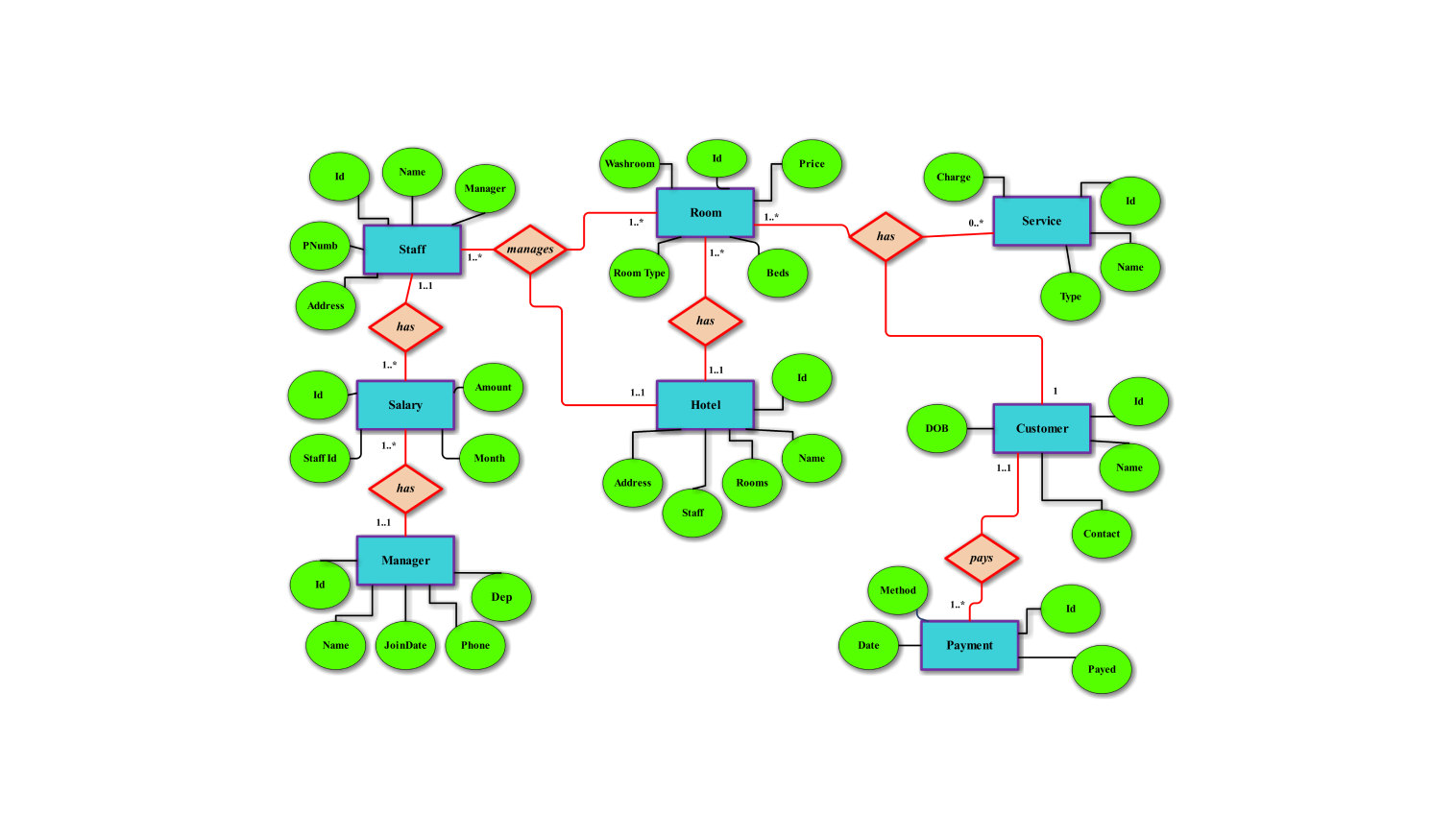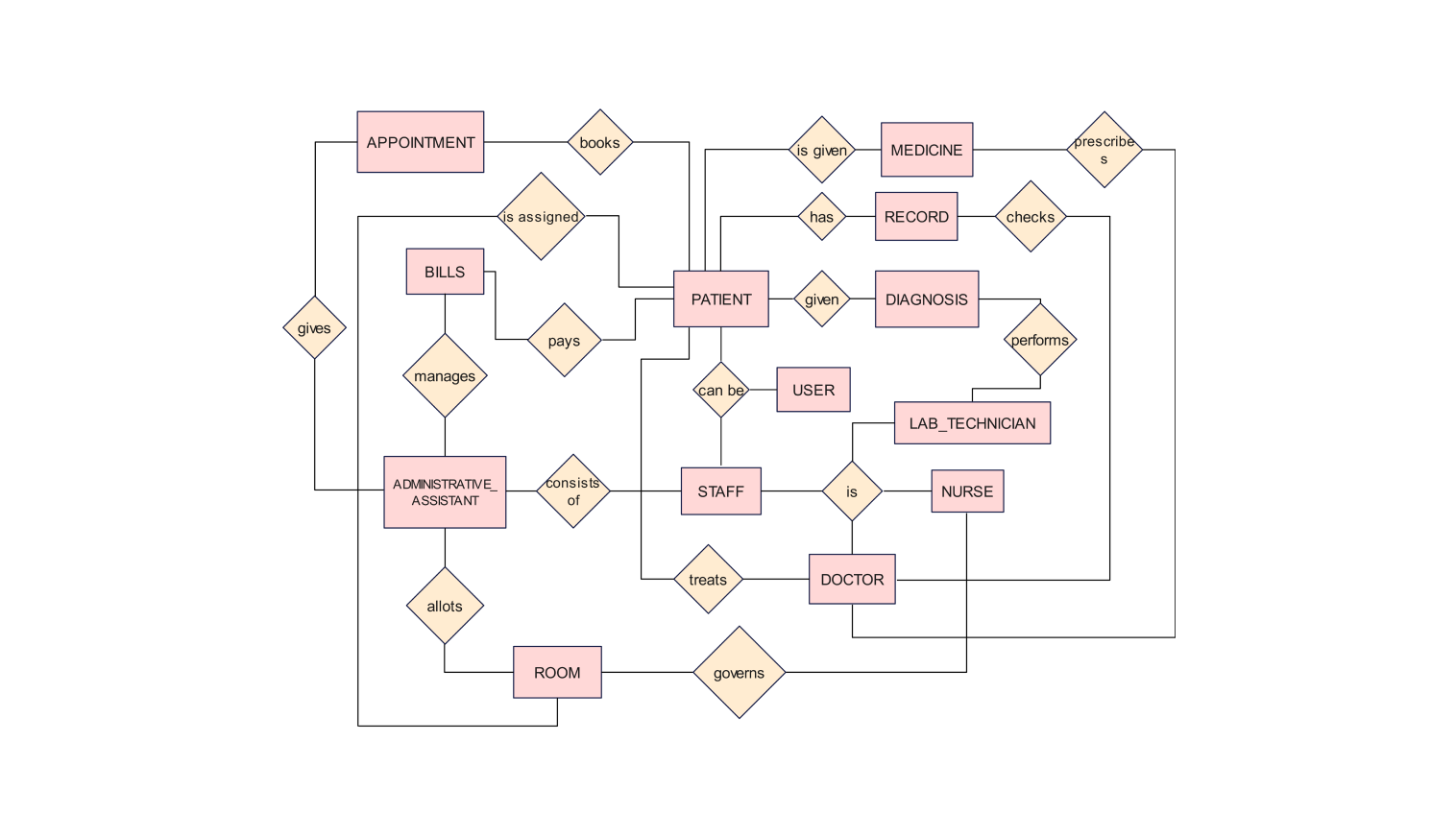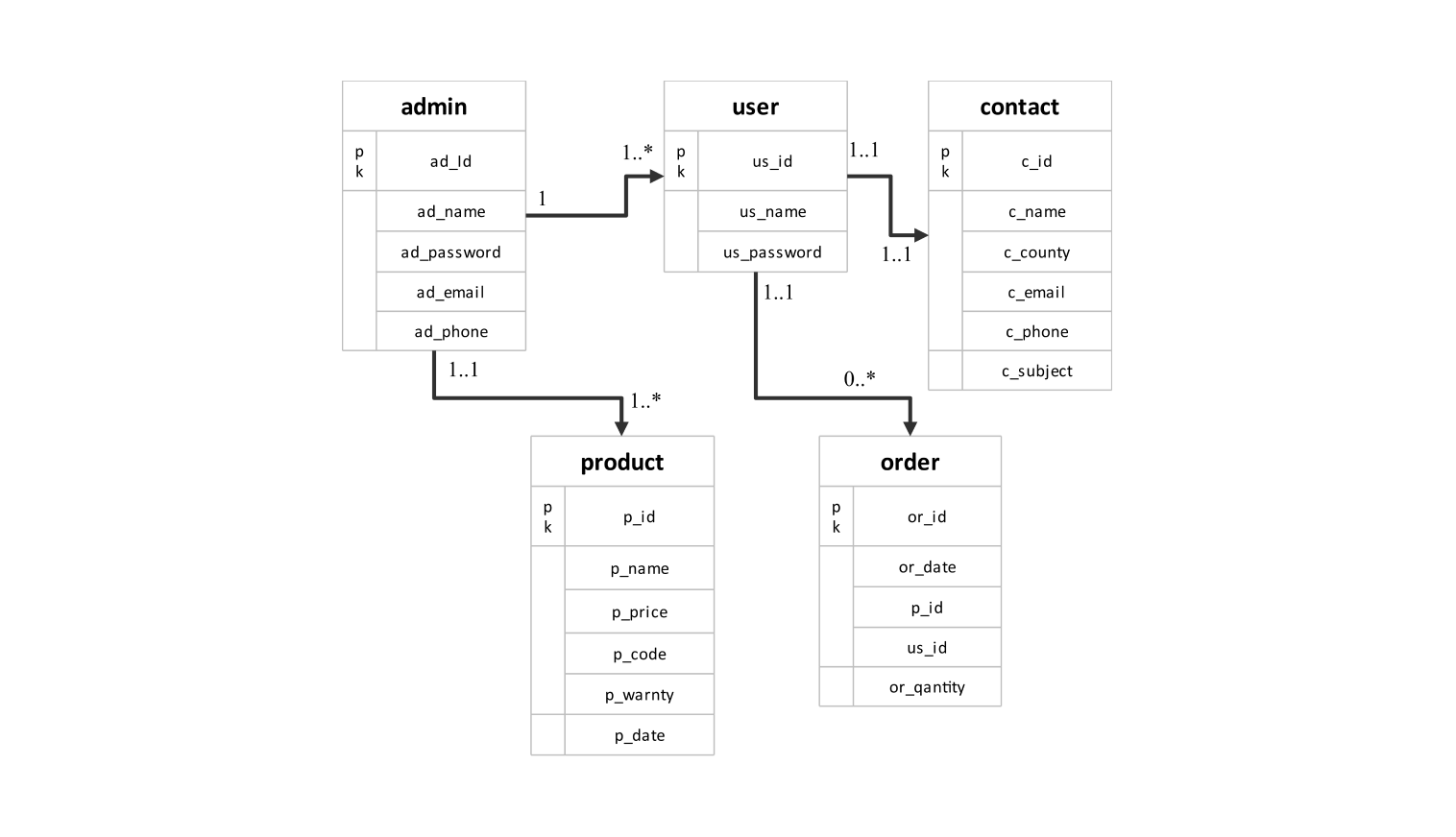- Templates
- ER diagrams templates
- ER diagram for event management
About this ER diagram for event management system
Following is an ER diagram for the event management system. It illustrates the internal workings and the various functions involved in an event management system. Mainly, it represents how an event is managed and the responsibilities of various stakeholders involved in an event management system.
In the following diagram, the entity event represents the event organized and attended by various individuals. An event can be of various type and thus involves distinct steps in managing it. Here the individuals that attend the event are described using the entity attendee.
Attendees can be individuals who were invited by the event holders or have tickets for the event. The Organizer is the person or group of individuals who have organized the event. They are the main stakeholders of the event. They are both responsible for managing as well as paying for the expenses regarding the event.
Here, the entity venue is used to represent the place used to organize the event. The venue can be a hotel, auditorium, open house, or any other place to help host the attendee. The venue is identified by its name.
The entity vendor is used to represent the vendor that provides services to the event. The vendor can provide different services like food and beverages, health and safety, or even entertainment services for the event. Each of the services offered has a fee, which is paid by the event organizers.
How to use this template
To get started simply click on the Use this template option. Once the template opens up you can personalize the diagram by dragging and dropping shapes from the libraries located on the side. Customize the layout to suit your systems requirements.
Edit and enhance your diagram by interacting with the text boxes and entering your content. Adjust the appearance of lines, boxes and text by choosing elements and utilizing formatting features provided by the platform. Save frequently used components, in your libraries for access when creating diagrams in the future.
When you're ready to share or save your diagram select a format. Click on "Export". Pick a file format such as(.eddx,.pdf,.png). Save the file, for reference. Distribute it with others as necessary.
Benefits of the ER diagram
An erd for event management system presents a depiction of how entities like events attendees’ organizers, venues and vendors are connected and interact. This diagram helps stakeholders communicate and understand the events structure effectively ensuring coordination.
Moreover, it assists in designing databases to maintain data accuracy and reliability. Event planners can easily monitor details, like attendee lists, vendor services and financial transactions using this diagram. Whether you’re a student, teacher or even from the management side this diagram will help you in your understanding of the systems architecture.
FAQs about the ER diagram
-
How do you connect an ER diagram?
Following are the steps to make your ER diagram
- Identify the entities within the system.
- List out the attributes associated with each of the entities and connect them.
- Identify the relationship between the entities and connect the entities using a diamond-like shape.
When designing an ER diagram, it’s a lot simpler when you use an online designing tool. Edraw Max is a free-to-use online platform where you can easily design your ER diagram.
-
What is an ER diagram for an event management system?
An ER diagram for an event management system is used to represent the various entities involved inside an event management system. The diagram also illustrates the relationship among the entities. A typical event management system involves the organizers, venue, attendees, and the vendor.
-
What makes a good ER diagram?
A good ER diagram highlights the entities as well as their relationships with other entities within the system. A good ER diagram also ensures that the design depicts the complete requirements of the system. It also ensures that there is no redundant naming of the elements present within the system.
-
What is primary key in ER diagram?
A primary key is an attribute that helps identify other attributes within an entity. It ensures that each record can be uniquely identified, which is crucial for maintaining data integrity and enabling efficient data retrieval.
Related templates
Get started with EdrawMax today
Create 210 types of diagrams online for free.
Draw a diagram free Draw a diagram free Draw a diagram free Draw a diagram free Draw a diagram free








